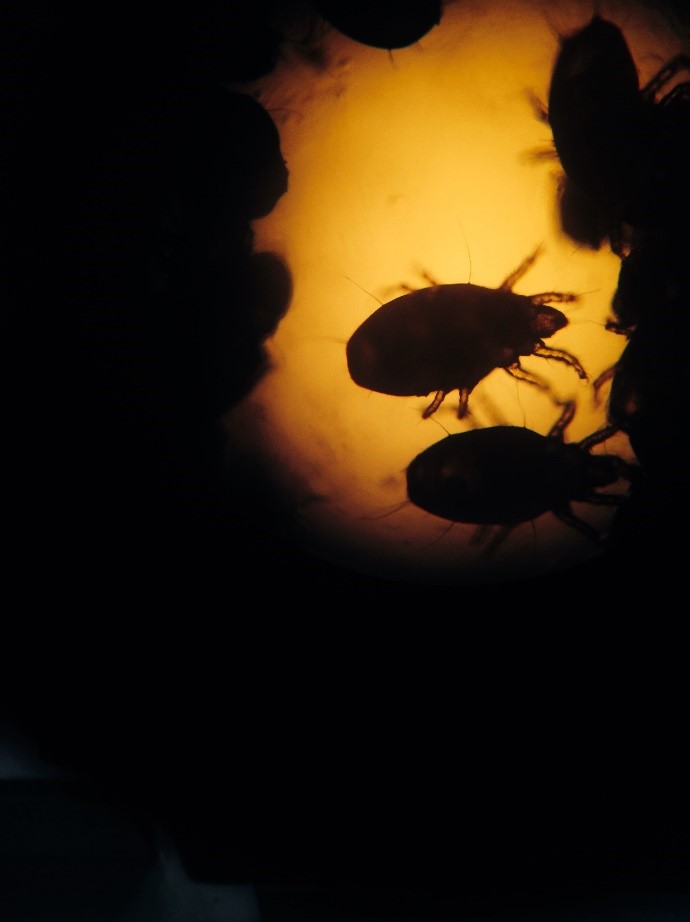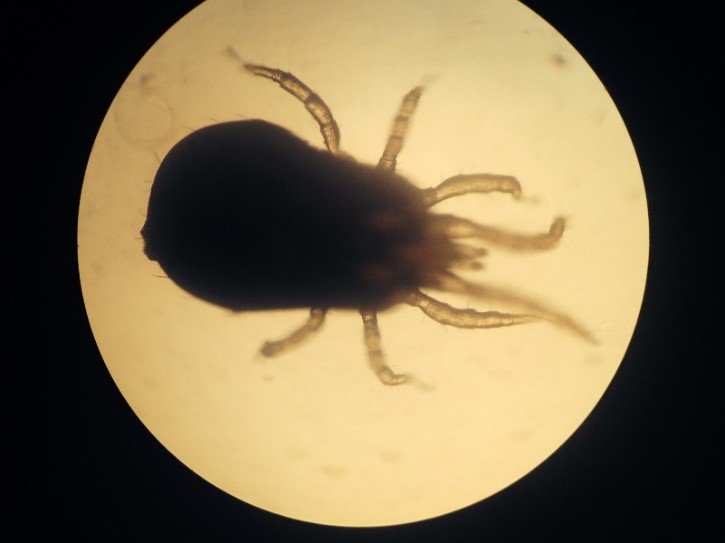Alison Colville-Hyde from Chicken Vet
Most people with chickens have probably heard of and may have also experienced the irritating chicken red mite in their birds. Red mites (Dermanysus gallinae) are incredibly common because they live in wild bird’s nests as well as in hen coops. Being nocturnal, they can be missed by the uninitiated, suddenly getting out of control causing itching on adults as well as stress and anxiety in your hens. Red mites crawl out of there hiding places during the hours of darkness, along the perch, up the chickens’ legs, then suck small amounts of blood. Once fed, they return to the crevices in the house to digest their feed, breed and lay eggs. Newly hatched red mite nymphs are transparent, turning red after a feed, then become dark brown.
Prevention is the best approach, but control is best managed with a three pronged attack; clean, treat and dust to reduce numbers rapidly before your birds become stressed and unthrifty. During the day remove all bedding and nesting material, sweep clean the house with a brush. If you have time and the weather is sunny, wash out and allow to dry. At the end of the day spray the inside of the coop with Dergall using a hand sprayer, making sure all areas are reached. Replace the bedding and nesting material. Repeat the Dergall spray in 5-7 days to destroy any newly hatched mites (nymphs). Sprinkle Chicken Vet mite and lice powder onto the bedding and nesting material. Sprinkle some mite powder around the vent area of each bird; an easy time to do this is when they are roosting. Repeat this the next time you use Dergall. This treatment regime will deter mites as a routine management plan in the early spring and is used for treating mites when you discover them. If mites persist then some topical Ivermectin drops may be required.
Northern fowl mites (Ornithonyssus sylviarum) are smaller than a red mite and live on the birds rather than within the house structure. They can also be found in wild bird’s nests and on rodents. These mites suck blood and do cause a massive stress on the birds, especially because they lay eggs in clusters on the downy feathers around the bird’s bottom, referred to as the vent. The eggs quickly hatch so the population can rapidly expand. Treat by cutting off any noticeable clusters of eggs on the feathers around the vent and burn them if possible. Using a fresh solution of Dergall, spray the vent of each bird and the perches once a week until the mites disappear.
Scaly leg mite (Cnemidecoptes mutans) is common in the senior hen; as a chicken ages the leg scales lift, enabling the scaly leg mite to burrow up under the scales making a home for itself, subsequently causing irritation and damage. In severe cases the legs may become swollen and infected. You will see white exudate and crusting, along with some scales coming away from the leg. Treat the coop as with red mites above and spray Dergall directly on to the bird’s legs once a week using a hand sprayer. Make the Dergall fresh every time, at the rate of 1 ml in 100ml of water. You can alternatively make this solution in a jar and dip the entire leg. For very established cases using Ivermectin drops in addition may be required.


Chicken red mites; nymphs left and adult right
Chicken lice (Menophon gallinae), but if you get an infestation you will be able to see them, being several millimetres in length. Lice live on the bird and feed on the bird’s skin, feathers and sometimes the blood. The most effective treatment with severe infestations is to apply Ivermectin drops to each bird and repeat again in 2 weeks. Dust each bird using Chicken Vet mite and louse powder paying particular attention under the wings and around the vent; repeat this weekly and apply the powder to the perches and nests as well.

Chicken louse


